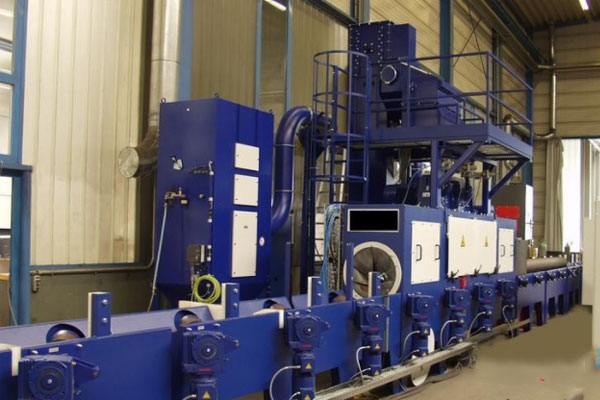Forging cleaning is the process of removing surface defects of forgings by mechanical or chemical methods. In order to improve the surface quality of forgings, improve the cutting conditions of forgings and prevent surface defects from expanding, it is required to clean the surface of billets and forgings at any time in the forging process.
In order to improve the surface quality of forgings, improve the cutting conditions of forgings and prevent surface defects from expanding, it is required to clean the surface of billets and forgings at any time in the forging process. Steel forgings are usually heated before forging with a steel brush or a simple tool to remove the oxide scale. The blank with large section size can be cleaned by high pressure water injection. Scales on cold forgings can be removed by pickling or blasting (pellets). Nonferrous alloy oxide scale is less, but before and after forging to pickling cleaning, timely detection and removal of surface defects. The surface defects of billet or forgings mainly include cracks, folds, scratches and inclusions. If these defects are not removed in time, they will have adverse effects on the subsequent forging process, especially on aluminum, magnesium, titanium and their alloys. The defects exposed after pickling of the non-ferrous alloy forgings are generally cleaned with files, scrapers, grinders or pneumatic tools. The defects of steel forgings are cleaned by pickling, sand blasting (shot), shot blasting, roller, vibration and other methods.
Acid cleaning
Removal of metal oxides by chemical reactions. For small and medium-sized forgings are usually loaded into the basket in batches, after oil removal, pickling corrosion, rinsing, drying and other processes. The pickling method has the characteristics of high production efficiency, good cleaning effect, no deformation of forgings and unrestricted shape. Pickling chemical reaction process will inevitably produce harmful gases, therefore, the pickling room should have exhaust device. Pickling different metal forgings should choose different acid and composition ratio according to the metal properties, and adopt the corresponding pickling process (temperature, time and cleaning method) system.
Sand blasting (shot) and shot blasting cleaning
With compressed air as the power of sandblasting (shot), make the sand or steel shot produced high-speed movement (sandblasting working pressure of 0.2 ~ 0.3Mpa, shot peening working pressure of 0.5 ~ 0.6Mpa), jet to the forging surface to beat off the oxide scale. Shot blasting is by high speed (2000 ~ 30001r/min) rotating centrifugal force of the impeller, the steel shot to the forging surface to knock off the oxide scale. Sandblasting dust, low production efficiency, high cost, more used for special technical requirements and special materials forgings (such as stainless steel, titanium alloy), but must adopt effective dust removal technical measures. Shot peening is relatively clean, there are also disadvantages of low production efficiency and high cost, but the cleaning quality is higher. Shot blasting is widely used for its high production efficiency and low consumption.
Shot peening and shot blasting clean up, at the same time, knock off the oxide scale, make the forging surface work hardening, is conducive to improve the fatigue resistance of parts. For forgings after quenching or quenching and tempering treatment, the work hardening effect is more significant when using large size steel shot, the hardness can be increased by 30% ~ 40%, and the thickness of hardening layer can reach 0.3 ~ 0.5mm. In the production according to the material and technical requirements of forgings to choose different material and particle size of steel shot. The use of sand blasting (shot) and shot blasting method to clean the forgings, surface cracks and other defects may be covered, easy to cause missed detection. Therefore, it is necessary to use magnetic flaw detection or fluorescence inspection (see physical and chemical examination of defects) to examine the surface defects of forgings.
tumbling
The forgings, in a rotating drum, collide or grind each other to remove the oxide scale and burr from the workpiece. This cleaning method uses simple and convenient equipment, but loud noise. Suitable for small and medium-sized forgings that can bear certain impact and not easy to deform. Drum cleaning has no abrasive, only add triangular iron or steel ball diameter of 10 ~ 30mm of non-abrasive cleaning, mainly by collision to remove the oxide scale. The other is to add quartz sand, scrap grinding wheel pieces and other abrasives, sodium carbonate, soapy water and other additives, mainly by grinding for cleaning.
Vibration cleaning
In the forgings mixed with a certain proportion of abrasives and additives, placed in the vibrating container, by the vibration of the container, so that the workpiece and abrasive grinding each other, the surface of the forgings oxide and burr off. This cleaning method is suitable for the cleaning and polishing of small and medium-sized precision forgings.
Post time: Apr-23-2021

